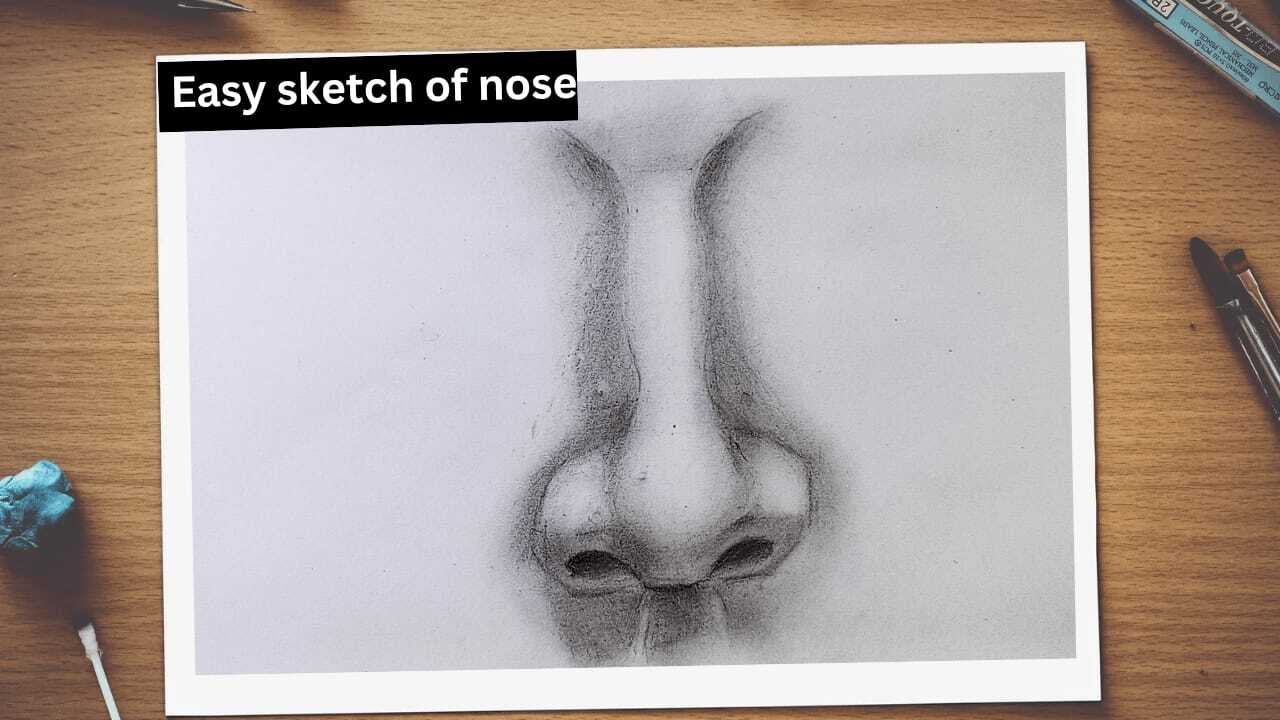Introduction to Easy Sketch of Nose
Drawing an easy sketch of nose can be troublesome, yet it is a repaying part of making sensible portrayals. To begin, understanding the major life frameworks and development of the nose is basic. The nose is made from a couple of key parts: the platform, nostrils, and tip, each adding to its intriguing shape and character. Start with light, essential guidelines to frame what is happening and its degree. Revolve around covering and elements to add significance and viewpoint, highlighting how light teams up with the nose’s surface. By practicing reliably and zeroing in on nuances, you can cultivate your capacities and make more precise and expressive drawings. Whether you’re a beginner or expecting to refine your system, turning into the best at drawing a nose is a pivotal stage in accomplishing sensible representation. Also read Easy Eyes Sketch for Beginners.
Materials Required for Drawing a Nose
Drawing easy sketch of nose , similar to any part of reasonable likeness, requires a determination of the value materials to accomplish the best outcomes. Here is an exhaustive rundown of materials you’ll need to get everything rolling:
1. Graphite Pencils:
Graphite pencils are fundamental for drawing the underlying blueprint and adding subtleties in your easy sketch of nose . They come in different grades, from hard (H) to delicate (B). For drawing a nose, having a scope of pencils is useful.
- H or 2H: for light rules and starter draws.
- HB or 2B: For general overshadowing and mid-tones.
- 4B or 6B: for hazier regions and adding profundity.
2. Erasers:
Erasers are critical for rectifying botches and adding features.
- Plied Eraser: adaptable and flexible, ideal for lifting graphite delicately without harming the paper.
- Accuracy Eraser: For eradicating little subtleties and making sharp features.
3. Paper:
The decision to buy paper fundamentally influences the end product.
- Sketchbook or Drawing Cushion: Pick one with a medium to significant burden (around 100–150 gsm) to deal with concealing and deleting without tearing.
- Smooth or Medium Surface: Smooth paper is great for fine subtleties, while a medium surface can add a touch of grasp for concealing.
4. Mixing Apparatuses:
Mixing is fundamental for making smooth changes and sensible overshadowing.
- Mixing Stumps or Tortillons: Moved paper instruments utilized for mixing graphite without smirching.
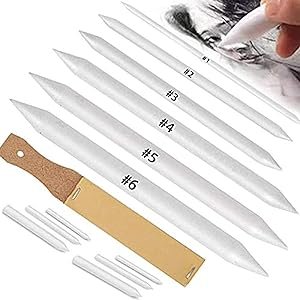
- Delicate brushes or Q-tips: for delicate mixing and making delicate edges.
5. Rulers and Compasses
Rulers and compasses help in keeping up with extents and evenness, which is particularly valuable for fledglings.
- Ruler: for estimating and drawing straight rules.
- Compass: for drawing exact circles and bends, which can be useful in the underlying portrayal stage.
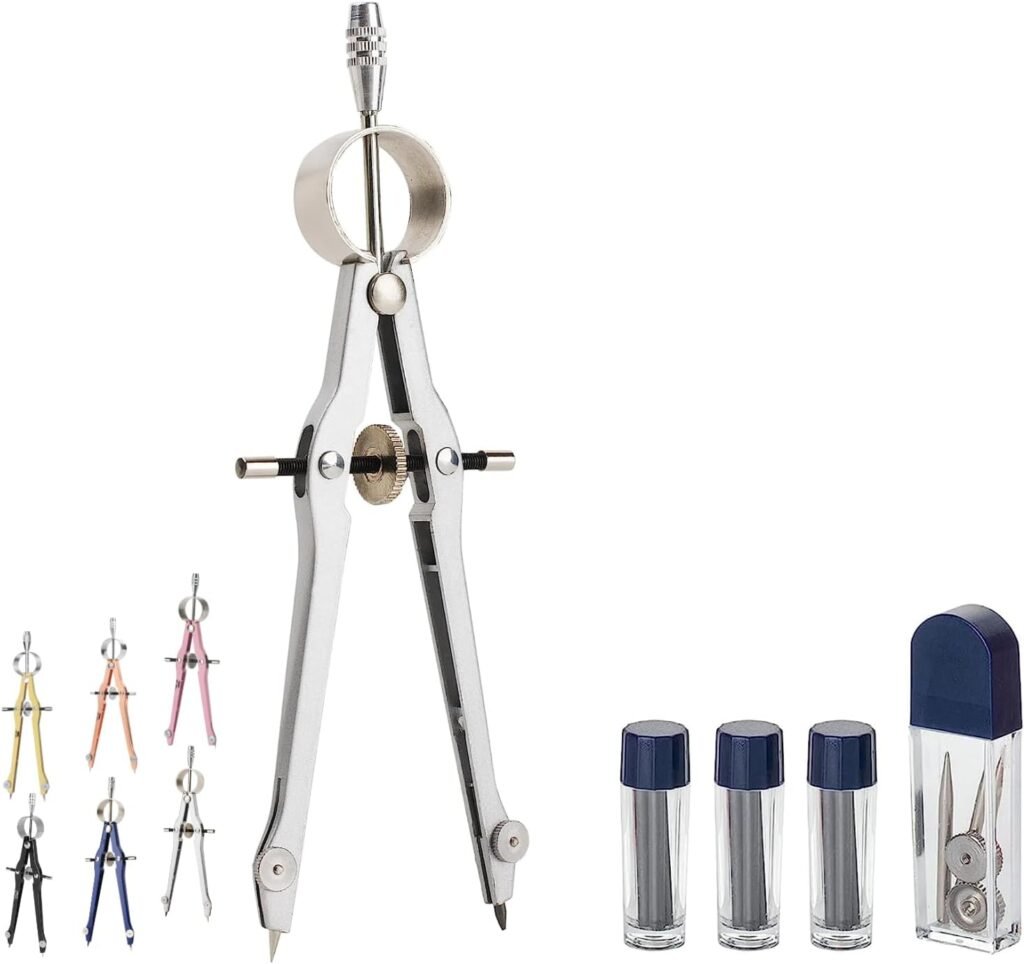
6. Reference Materials
Utilizing reference materials is vital for exactness.
- Photos: top-notch photographs showing various points and lighting conditions.
- Life Systems Books: Understanding the fundamental design of the nose can improve your drawing.
7. Lighting
Appropriate lighting is significant for both noticing your subject and chipping away at your drawing.
- Work area light: movable lights with sunshine bulbs are great for diminishing eye strain and giving predictable lighting.
8. Fixative Shower
Fixative showering helps save your drawing and forestall smirching.
- Functional Fixative: Permits you to keep dealing with your drawing subsequent to splashing.
- Last Fixative: Utilized once the attraction is finished to safeguard it from smircesh and dust in your easy sketch of nose .
9. Extra Devices
Extra instruments can upgrade your drawing cycle:
- Mechanical Pencils: For scarce differences and itemized work.
- Charcoal Pencils: For more profound shadows and sensational impacts.
- White Gel Pen or Pencil: For including features in more obscure regions.
Having the right materials is crucial to achieving sensible and definite drawings. By putting resources into quality apparatuses and understanding their purposes, you can work on your abilities and make more exact representations.
Draw with me step by step to easy sketch of nose :
I couldn’t say whether you’ve seen it, yet I’ve previously let you know that your nose is comprised of various shapes that consolidate to frame your nose. These shapes compriset’s more, presently I’ll show you how to draw a nose with straightforward advances in easy sketch of nose . circles, straight lines, and vertical lines that assist us with drawing the nose. What’s more, presentl? I’ll show you how to draw a nose with straightforward advances. How about we start!
Step 1:
In our initial step, we draw a picture of a of a nose utilizing three circles, a straight line, and another shape, as in this picture.
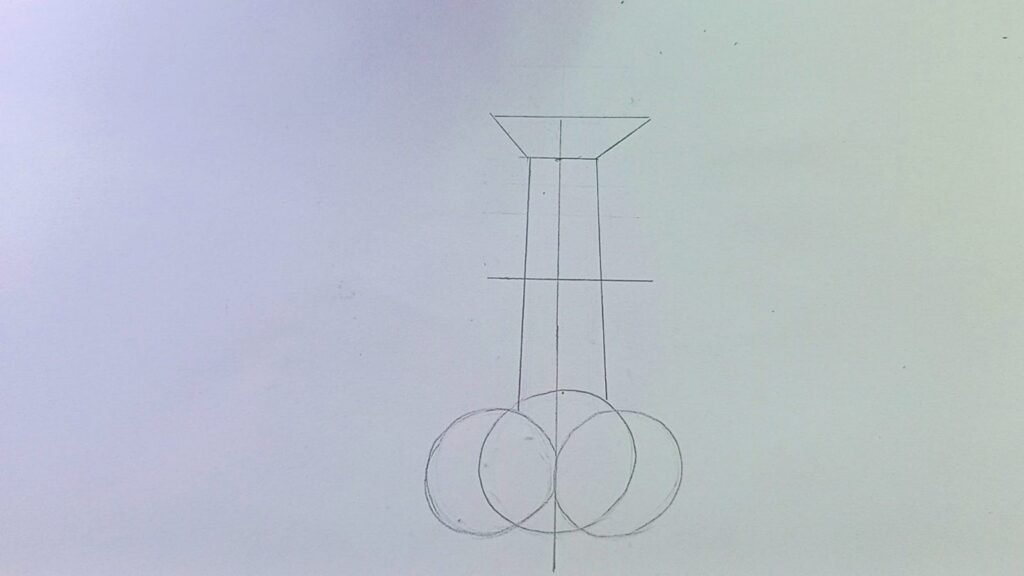
Step 2:
These lines primarily act as the limit lines for the shades of your easy sketch of nose . Shadow limit lines should be drawn. On the off chance that we don’t define these boundaries, we could experience difficulty sorting out where to put the shade, so it doesn’t look great since we don’t have the foggiest idea about the correct way.
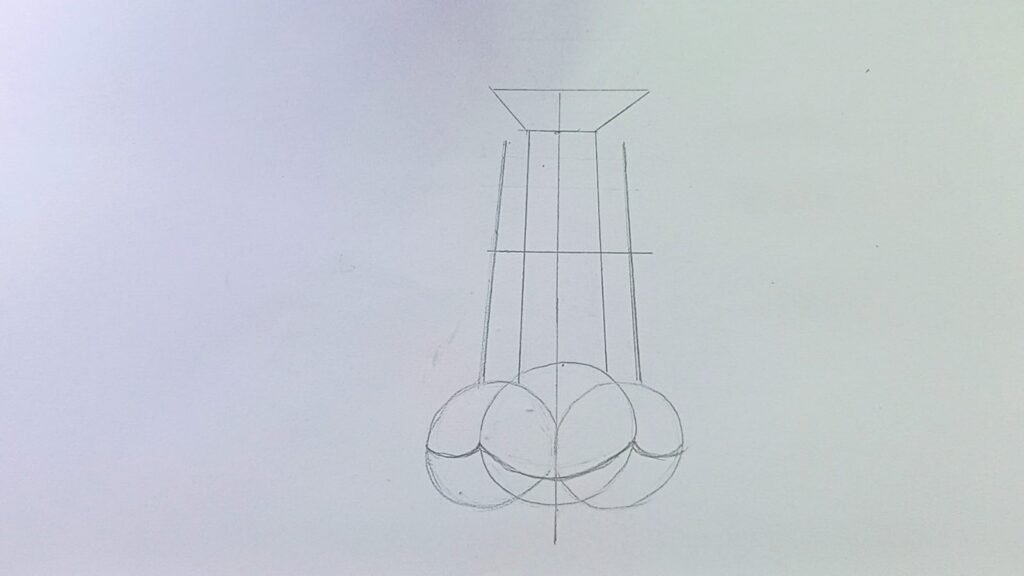
Step 3:
In this step, we determine the real state of the nose by utilizing these directions. As you can see in the image, we have associated every one of the upper lines, and presently, utilizing these circles, we draw the alar wrinkle of the nose, and once more, with the assistance of these circles, we draw the nostril. Presently, we can see that our nose sketch has begun.

Step 4:
In our fourth step, we draw the shades of the nose, which make your nose more sensible with the utilization of limit lines. We conceal the nostrils under the tip. One thing to recall is that we need to make the nostrils a darker shade. Also, before we can go further, we need to delete the developed line.

Step 5:
In our fifth and last step, you can add every one of the dull and light shades to your nose, as displayed in this picture. In this step, I need to give you a tip to further develop your ability to conceal.

Tips for Drawing a Perfect Nose
An ideal nose expects to notice detail, comprehension of life systems, and steady practice. Here are a few hints to assist you with accomplishing a more sensible and precise nose sketch:
1. Concentrate on the life structures.
Understanding the hidden design of the nose is significant. The nose is made out of the scaffold, nostrils, and tip, alongside the nasal bone and ligament. Really get to know these parts to precisely portray their structures and how they interface with light and shadow.
2. Use references.
Working from reference photographs or genuine perceptions can enormously improve your precision. Pick excellent pictures that show various points and lighting conditions. Give close consideration to how light and shadow characterize the shapes and forms of the nose.
3. Begin with essential shapes.
Start your sketch with straightforward mathematical shapes to lay out the essential design. Draw a triangle or a trapezoid for the general state of the nose, and use circles for the nostrils and tip. This assists in keeping up with rectifying extents and evenness.
4. Map Out Extents
Legitimate extents are vital to a reasonable nose. The width of the nostrils ought to line up with the inward corners of the eyes. The length of the nose commonly matches the length of the ear. Utilize light rules to outline these extents prior to adding subtleties.
5. Center around concealment.
Concealing is fundamental for creating profundity and authenticity. Notice the heading of light in your reference and apply concealment as needed. Utilize a range of pencil grades, from hard (H) for light shadows to delicate (B) for more obscure regions. Mix delicately with mixing stumps or q-tips to accomplish smooth changes.
6. Feature the Features
Features are the brilliant places where light raises a ruckus around town straightforwardly. Utilize an eraser to lift graphite here, or utilize a white pencil or gel pen for added splendor. Featuring the extension, tip, and edges of the nostrils can improve the three-layered impact.
7. Detail the nostrils and tip
Really focus on the nostrils and the tip of the nose, as they are central focuses. Guarantee that the nostrils are even and appropriately concealed to give them an adjusted appearance. The tip of the nose ought to be concealed and featured to show its bulbous structure.
8. Mix cautiously.
Mixing assists with making smooth changes among light and shadow. Use mixing stumps, delicate brushes, or q-tips to mix the graphite without smearing unreasonably. Be careful not to over blend, as it can straighten the drawing.
9. Practice consistently.
Reliable practice is the way to progress. Sketch noses from various points and lighting conditions to construct your abilities. After some time, you will develop a superior comprehension of the nose’s design and how to sensibly deliver it.
By following these tips and devoting time to rehearse, you’ll have the option to make more exact and similar portrayals of noses, upgrading the general nature of your picture drawings.
What to Avoid When Sketching a Nose?
Making a sensible nose sketch can be testing, and certain traps can diminish your work. Here are key viewpoints to stay away from for an effective drawing:
1. Stay away from over complicating
Beginning with an excessive number of subtleties can make your drawing look jumbled and overpowering. Start with straightforward shapes and rules to frame the fundamental design of the nose. Step by step,step, add subtleties in the wake of laying outthe extents the extents and situationssituations.
2. Try not to overlook extents
In accurateness can make the nose look unnatural. Try not to make the nose excessively enormous or excessively smallsmall comparedcompared toto the remainder of the face. Use reference focuses, like adjusting the nostrils to the inward corners of the eyes, to keep up with precise extents.
3. Keep away from unforgiving diagrams
The nose has delicate, unobtrusive advances instead of unforgiving lines. Utilizing weighty blueprints can cause it to show up level and unreasonable. All things considered, utilize light, delicate strokes to characterize the shape and depend on concealing to createcreate structure and profundity.
4. Try not to disregard concealment.
Ill-advised concealing can bring about a level or silly nose. Try not to conceal with a solitary pencil grade; all things considered, utilize a rangerange of pencils from hard (H) to delicate (B) to make a full scope of values. Focus on the heading of light and what it means for the shadows and features.
5. Keep away from even slip-ups.
While noses are,are, for the most part,part, even, minor imbalances give them character. Try not to make the nostrils and sides of the nose entirely indistinguishable, as this can look unnatural. Notice your reference near unpretentious contrasts.
6. Don’t over blend.
Overblending can bring about a deficiency of surface and detail, making the nose look unreasonable. Mix cautiously and specifically to keep up with the normal surface of the skin. Use mixing instruments like stumps or q-tips with a light touch.
7. Try not to disregard the surface.
The skin on the nose has pores and unobtrusive surfaces that add to its authenticity. Try not to draw the nose excessively smooth; all things being equal, add fine subtleties and surfaces where fitting to improve authenticity.
8. Try not to rush
Surging can prompt slip-ups and errors. Take as much time as necessary to notice, plan, and execute each piece of the nose. Persistence and cautious perception are critical to a fruitful drawing.
9. Try not to utilize reference.
Utilizing a singlesingle reference can restrict how you might interpret the nose’s design. Concentrate on various references to perceive how different lighting, points, and facial elements influence its appearance.
By being aware of these normal traps, you can upgrade the quality and authenticity of your nose portrayals, prompting more effective and exact picture drawings.
FAQs
1. What are the essential moves toto begin drawing a nose?
Start with basic mathematical shapes to frame the design, like a triangle or trapezoid for the fundamental shape and circles for the nostrils and tip. Then, refine the shapes, zeroing in on extents and arrangements. arrangements. Then, at that point, add concealmentconcealment to createcreate profundity and aspect, utilizing light and shadow to characterize the shapes.
2. How might I further develop my nose–drawing abilities?
Practice routinely,routinely, and use references from photographs or reality. Concentrate on the life systems of the nose to figure out its design. Try different things with various concealing methods and pencil grades to upgrade authenticity. Noticing and outlining noses from different points and lighting conditions can likewise assist with working on your abilities.
3. What materials are best for drawing a nose?
Utilize a rangerange of graphite pencils (H to B grades) for drawing and concealing. Quality–attracting paper witha medium a medium to significant burden gives a decent surface. Mixing devices like stumps or q-tips, plied and accurateaccurate erasers, and a decent work area light for legitimate lighting are likewise fundamental.
4. How would I make the nose look three-layered?
Center around concealmentconcealment and features. Recognize the light source in your reference and apply concealmentconcealment to make shadows where the light doesn’t hit. Utilize hazier tones for the shadows and lighter tones for the features, mixing flawlessly to progress between them. Includingfeatures like features like the scaffold and tip upgrades the 3D impact.
5. What normal mix-ups would it be a good idea for me to keep away from while drawing a nose?
Keep away from overcomplicating the underlying representation, inaccurate extents, unforgiving frameworks, disregarding concealmentconcealment, overblending, overlooking surfacessurfaces, and surging the cycle. Likewise, abstain from depending on a solitary reference and makemake the nose entirely even, asa normal a normal imbalance adds authenticity.
6. How would I accurately conceal a nose?
Utilize a rangerange of pencil grades to make differing shades of light and dull. Notice your reference to see where the light hits and where the shadows structure. Apply light, even strokes for unpretentious overshadowing, and mix delicately to smooth advances. Focus on the light source and the nose’s forms to portray profundity precisely.
7. For what reason does my nose drawing look level?
Levelness frequently results from an absence of legitimate overshadowing and featuring. Guarantee you utilize a full scope of values, from light to dull, to make profundity. Stay away from cruel diagrams and overblending, which can smooth the drawing. Center around catching the three-layered structure by precisely portraying light and shadow.
8. How significant is utilizing a reference while drawing a nose?
Utilizing references is urgent for precision and authenticity. References assist you with grasping the nose’s extents, shapes, and how light connects with its surface. Concentrating on various references can likewise open you to different nose shapes and points, further developing your general drawing abilities.
Conclusion
Becoming the best at drawing a nose is an essential move toward achieving sensible representation. By grasping the life structures, utilizing the right materials, and rehearsing routinely, you can work on your abilities and make more exact drawings. It’s vital to start with straightforward shapes and rules, cautiously map out extents, and spotlight on concealing to add profundity and aspect. Keep away from normal traps like overcomplicating the underlying representation, cruel diagrams, and inappropriate overshadowing. Utilizing numerous references can improve exactness and give a superior comprehension of the nose’s construction. With persistence and predictable exertion, you can foster the capacity to deliver noses that add to expressive and sensible representations. Keep in mind that each training meeting brings you closer to dominating this imperative part of drawing and improving the general nature of your work of art.

